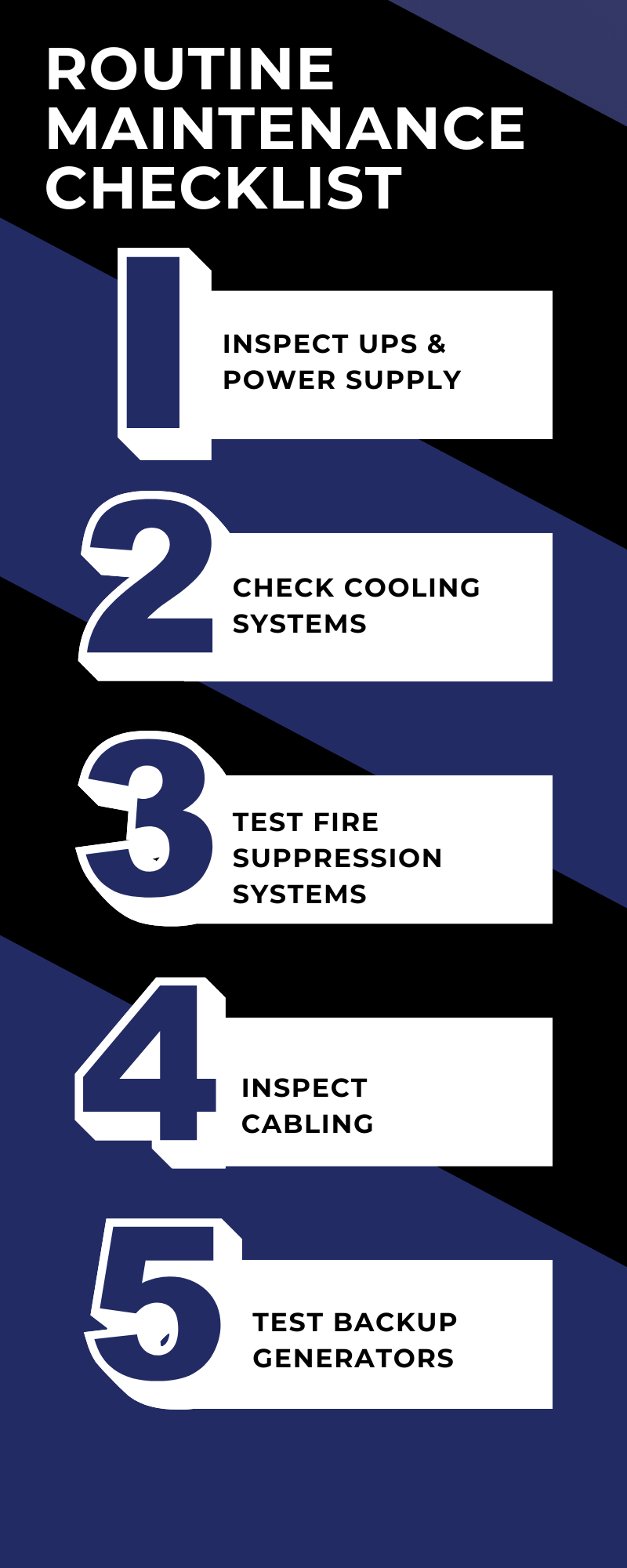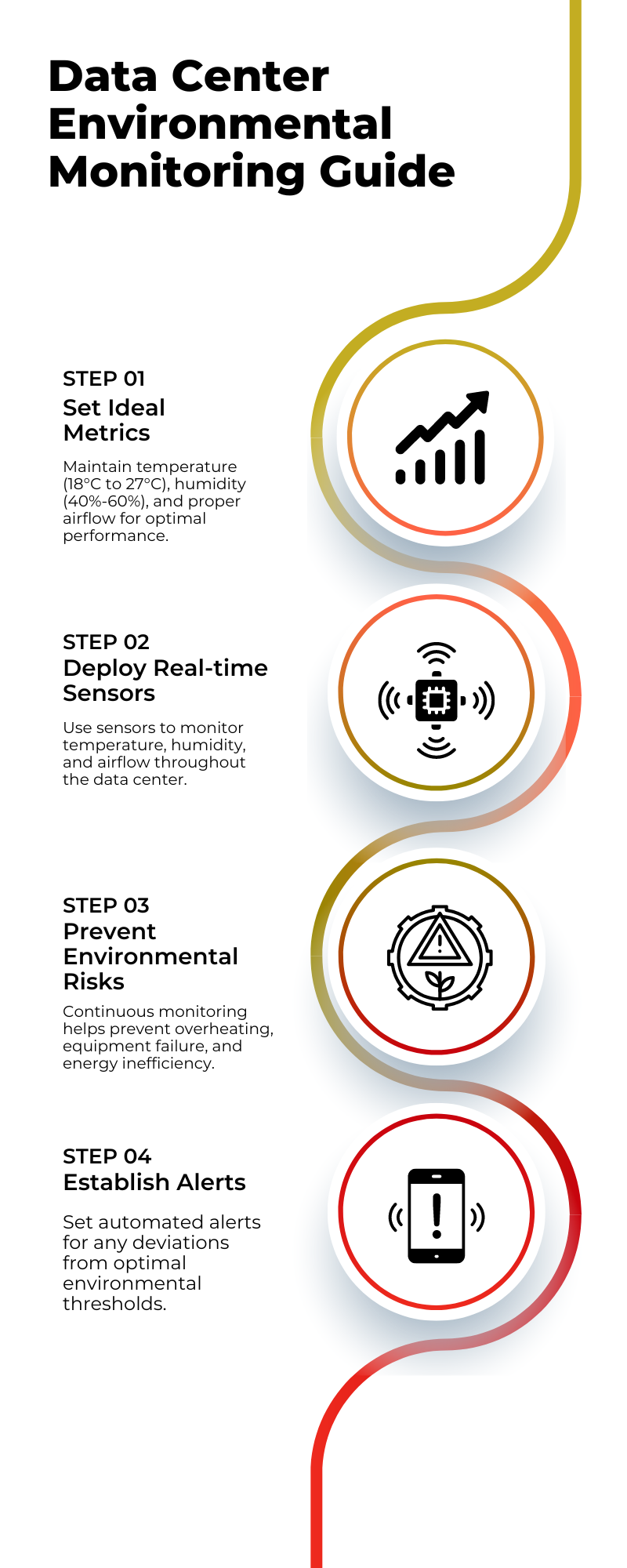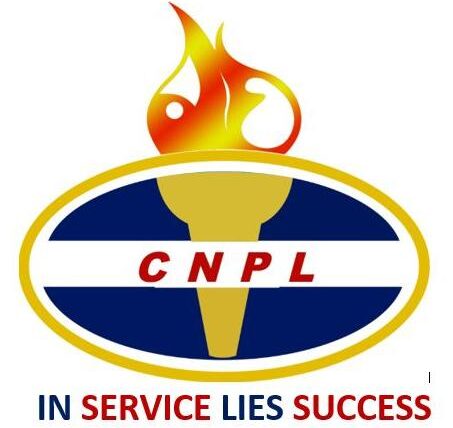The Ultimate Data Center Maintenance Handbook: Keep Your Operations Running Smoothly!

Introduction
In today’s digital landscape, ensuring optimal data center maintenance has never been more crucial. With enterprises relying heavily on uninterrupted data access, even minor maintenance issues can have serious consequences, including extended downtime, loss of critical data, and increased security risks. These issues not only disrupt operations but also result in significant financial losses and reputational damage.
This guide will help businesses prevent risky scenarios by outlining the essential practices for keeping data centers running efficiently. Whether you’re managing a small on-premise setup or a large-scale cloud infrastructure, the strategies covered will ensure your data center remains scalable, reliable, and ready to meet future demands. From routine maintenance protocols to advanced monitoring systems, we’ll explore actionable insights that can make a significant difference in your facility’s performance and long-term success.
What is a Data Center? And why do organizations need one?
A data center is a centralized facility that houses computer systems and associated components, such as telecommunications and storage systems. Organizations require data centers to manage and store their data securely while ensuring efficient access and processing. These facilities provide the necessary infrastructure for running applications, hosting websites, and storing critical business information.
Furthermore, data centers provide sophisticated security, redundancy, and disaster recovery options to protect against data loss or interruption. With the rise of cloud computing and big data, enterprises want a dependable data center to scale their operations and remain competitive. Businesses that invest in data centers can increase operational efficiency, performance, and business continuity in an increasingly digital world.
Why Do Data Centers Need Routine Inspections?
Regular inspections are the backbone of reliable data center operations. By identifying potential issues early on, you can prevent minor problems from snowballing into costly outages that disrupt services and jeopardize data integrity. Routine inspections allow you to catch hardware malfunctions, cooling system inefficiencies, or power supply inconsistencies before they lead to system failure. They also help maintain optimal performance and prolong the lifespan of your equipment, reducing overall maintenance costs.
Key Components to Inspect in a Data Center
- Power Supplies: Uninterruptible Power Supply (UPS) systems and backup generators are critical for preventing outages. Regular testing ensures they are ready to handle sudden power failures and continue supplying uninterrupted power.
- Cooling Systems: HVAC units and Computer Room Air Conditioning (CRAC) systems regulate temperature to prevent overheating. Regular monitoring ensures that cooling systems are operating efficiently, keeping equipment within safe temperature ranges.
- Cabling and Connections: Poorly managed or faulty cabling can cause connectivity issues and data transmission failures. Routine inspections can identify worn-out connections and prevent network downtime.
- Fire Suppression Systems: Ensure fire alarms and suppression systems are fully functional and up-to-date. Regular inspections minimize the risk of fire damage, which could destroy hardware and critical data.

Hardware Upgrades and Lifecycle Management for Your Data Center
Updating hardware is crucial for ensuring maximum performance and security of the datacenter. Outdated hardware or components nearing their End-of-Life (EOL) present significant risks, including slower processing speeds, increased likelihood of breakdowns, and heightened vulnerability to cyberattacks. As manufacturers discontinue updates and support for EOL equipment, these systems become prone to security breaches and operational inefficiencies, jeopardizing the overall stability of the data center.
Planning for Upgrades: A well-structured hardware lifecycle plan is crucial for staying ahead of potential issues. This plan should track the age and performance of each component, allowing you to determine when upgrades or replacements are needed. It’s also essential to align hardware upgrades with future business growth and scalability. By considering long-term needs, you can ensure that the new hardware can handle increased data demands and evolving workloads. Additionally, opting for energy-efficient equipment not only enhances performance but also reduces power and cooling costs, contributing to overall operational savings.
Managing Legacy Equipment: If completely replacing outdated hardware isn’t feasible, there are strategies for integrating new technology with legacy systems. Using hybrid solutions or software-defined infrastructure (SDI) can extend the lifespan of older components while ensuring compatibility with modern systems. Phasing out obsolete technology gradually also allows for a smoother transition, reducing risks and minimizing downtime.
Environmental Monitoring and Control in a Data Center
Maintaining environmental stability in a data center is critical for ensuring the performance and longevity of hardware. Factors like temperature, humidity, and dust can directly impact the efficiency and lifespan of servers and other equipment. Excessive heat can lead to hardware failure or even permanent damage, while fluctuating humidity levels can result in condensation or static discharge, both of which threaten the integrity of sensitive components. Dust accumulation obstructs airflow and clogs cooling systems, further escalating the risk of overheating and hardware failure.
Monitoring Key Metrics
- Temperature
- Keeping servers cool is essential for preventing thermal stress on hardware. Consistently monitoring temperatures ensures that cooling systems are functioning properly and that equipment remains within safe operating ranges. Excessive heat can lead to sudden shutdowns, increased wear and tear, and premature hardware failures.
- Humidity Control
- Maintaining balanced humidity levels is equally important. High humidity can cause condensation, which may lead to short circuits and corrosion. Conversely, low humidity increases the risk of electrostatic discharge, which can irreparably damage sensitive electronics.
- Airflow Management
- Ensuring proper airflow is critical for optimal cooling. Well-organized airflow management prevents hotspots, improving cooling efficiency and reducing energy consumption. Regular maintenance of cooling systems and ensuring clean airflow paths can help prevent issues related to overheating and dust accumulation.
Disaster Recovery and Backup Solutions in a Data Center
Disaster recovery planning and backup systems are essential safeguards for protecting data centers from data loss and extended downtime. Unplanned events like hardware failures, cyberattacks, or natural disasters can result in catastrophic consequences, including the loss of critical data and severe operational disruptions. A well-developed disaster recovery plan ensures that businesses can quickly restore operations, minimizing downtime and financial damage. Backup systems further protect data by ensuring it’s securely stored and recoverable in case of failure.
Data Backup Solutions
One of the most effective strategies for protecting data is implementing automated backups with offsite storage. Automated systems ensure that data is consistently backed up, reducing the risk of human error or forgotten backups. Storing these backups offsite—whether in the cloud or a secondary data center—provides extra protection in case the primary site is compromised.
Disaster Recovery Plans
A robust disaster recovery plan should define the critical infrastructure that must remain operational during a disaster. Regularly test backup systems to ensure they function as expected. To minimize downtime, set clear Recovery Time Objectives (RTO) for how quickly systems need to be restored, and Recovery Point Objectives (RPO) to determine how much data loss is acceptable, aiming for as close to zero as possible.

Best Practices for Long-Term Maintenance for Your Data Center
Effective long-term maintenance is key to ensuring the reliability and performance of data centers. One crucial practice is maintaining detailed documentation of all maintenance, repairs, and hardware upgrades. These records provide a clear history of system performance, help identify patterns in equipment failures, and support audits for transparency and regulatory compliance.
Training on-site IT staff is another essential component. Well-trained teams can spot potential issues early and handle routine tasks, such as monitoring system performance and conducting basic troubleshooting, reducing the risk of costly breakdowns.
In complex environments, outsourcing maintenance to experts can be highly beneficial. Third-party providers like Compulease Networks specialize in managing intricate data center infrastructures. They offer consistent, specialized care, ensuring that systems stay up-to-date with the latest technologies and industry best practices. These providers can also assist with complex repairs and upgrades, allowing internal teams to focus on core business operations while maintaining operational efficiency.
In Conclusion, What Are The Key Points You Should Take Away From This Blog?
Maintaining a data center is an ongoing process that requires attention to several critical areas to ensure long-term reliability and performance. Routine inspections help identify potential issues early and prevent minor problems from escalating into costly outages. Keeping hardware up-to-date is essential to avoid system vulnerabilities and inefficiencies, while environmental monitoring ensures that factors like temperature, humidity, and airflow remain within safe ranges. Additionally, disaster recovery planning and automated backup solutions are indispensable for protecting against data loss and minimizing downtime during unexpected events.
Now is the time to evaluate your current data center maintenance strategy. Does it meet the needs of your business, or is there room for improvement? Consider optimizing your maintenance practices to enhance performance, reduce risks, and increase scalability.
Why Compulease is the Best Choice
Compulease Networks offers specialized, consistent maintenance services for complex data center environments. With expertise in both preventive maintenance and cutting-edge solutions, Compulease can help you keep your data center running smoothly, allowing you to focus on growing your business with peace of mind.
